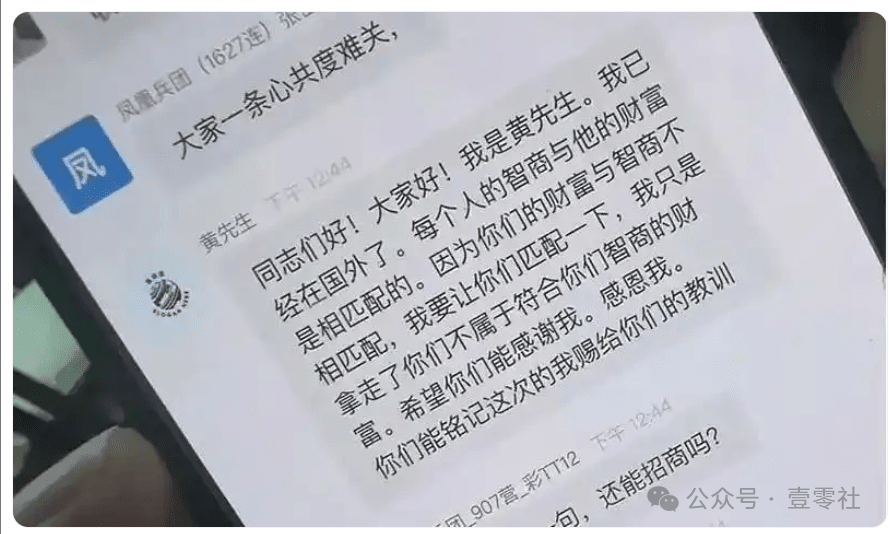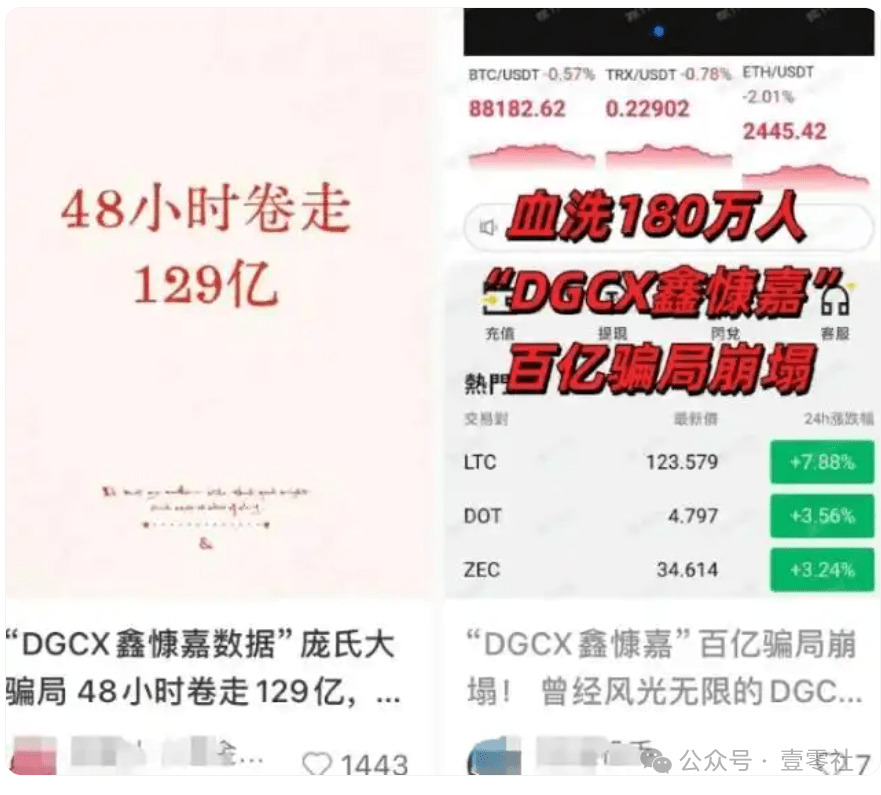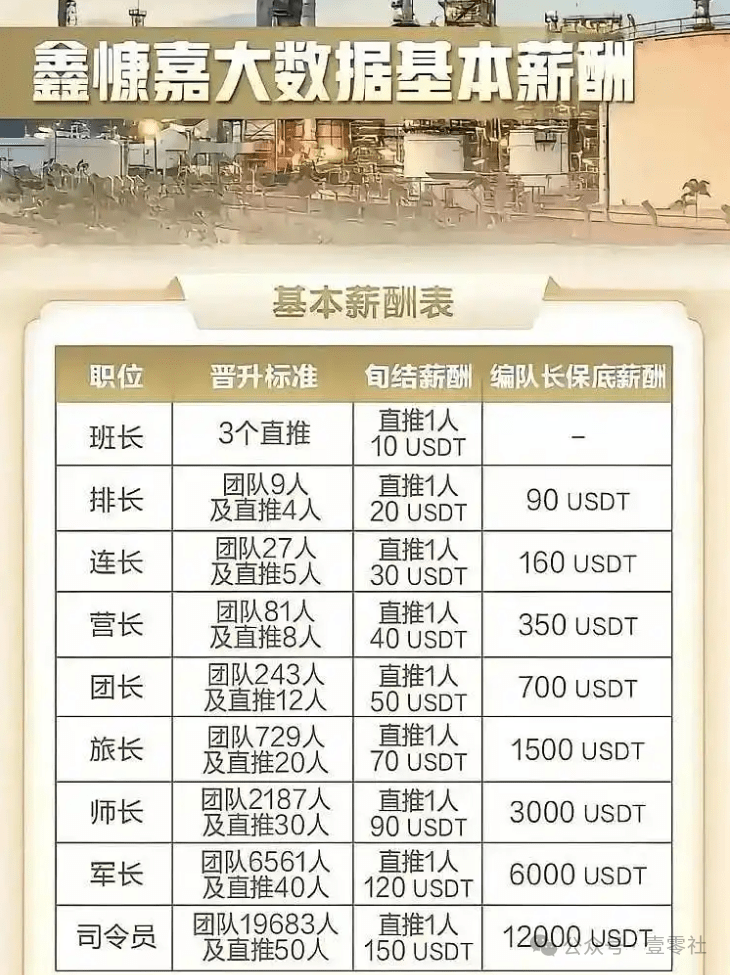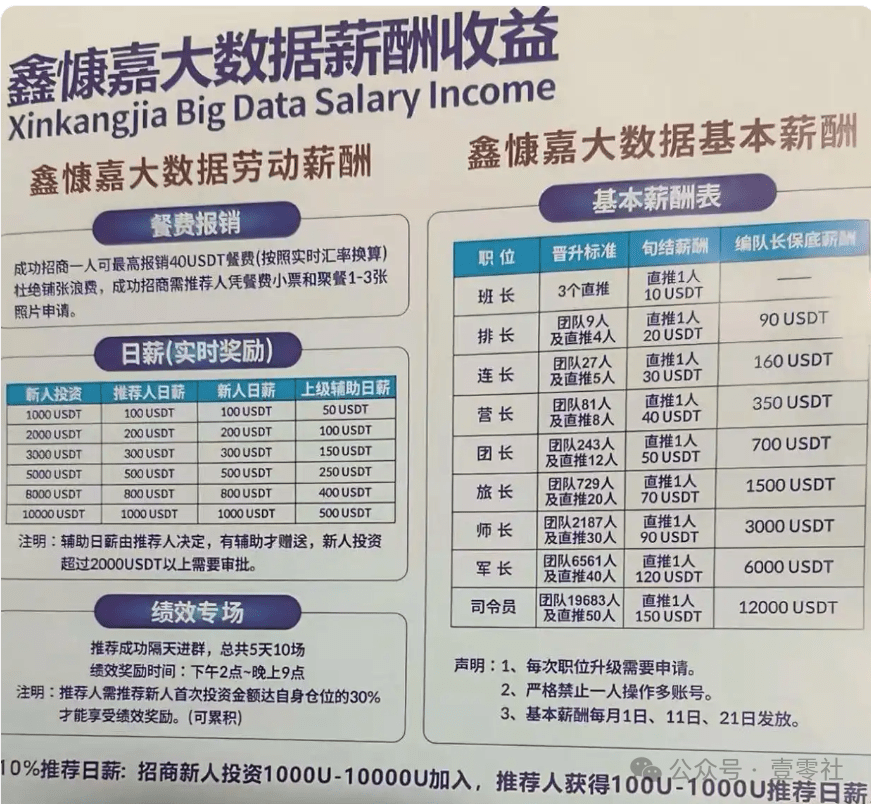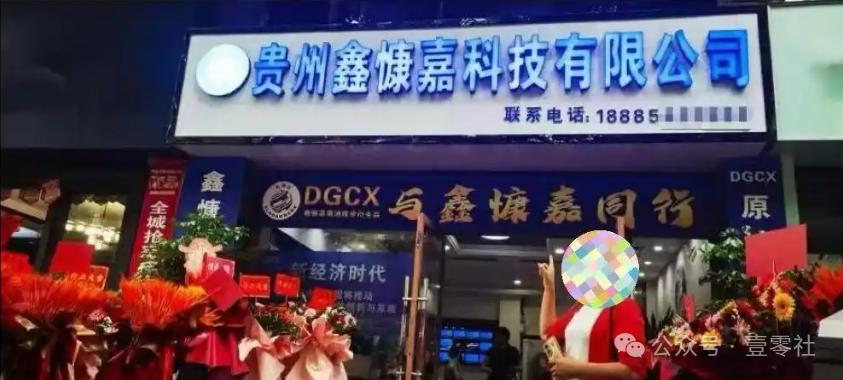A series of rampant messages in WeChat group revealed the largest stablecoin scam in China in recent years, with 13 billion yuan evaporating without a trace in 48 hours.
The IQ and wealth of 2 million people were 'matched'
'Hello everyone! I am Mr. Huang. I am already abroad. Everyone's IQ is matched with their wealth. Because your wealth does not match your IQ, I want to make you match; I just took away the wealth that does not belong to your IQ.'
At the end of June 2025, in various newly formed 'Xinkangjia' investor groups, people were forwarding the operator Huang Xin's message. Just days earlier, this platform, claiming to have 2 million members and involved in 13 billion yuan, suddenly collapsed. Amidst the chaos of investors, Huang Xin's words were like salt in the wound. The mastermind behind this meticulously designed Ponzi scheme had completed the cross-border transfer of 1.8 billion USDT (about 12.9 billion yuan) and was already living freely abroad. The last message on the 'Xinkangjia' platform's announcement board remained 'system maintenance upgrade', while the operator behind it had already absconded with the funds. According to preliminary police statistics, the amount involved reached 12.9 billion yuan, affecting over 2 million members.
'The day before, we were still sending red envelopes in the group to celebrate the income arrival, and the next day I found the app wouldn't open.' A victim from Henan, Ms. Zhang, trembled as she showed a screenshot of her phone, 'The 200,000 yuan I invested as retirement money, I haven't seen a single splash.'
Glamorous exterior, false persona
The Xinkangjia platform did not become famous overnight. The scam began in March 2021, when Huang Xin, Shao Xinkang, and Wang Yanjia registered 'Guizhou Xinkangjia Big Data Service Co., Ltd.' under their combined names. The registered capital appeared to be 30 million yuan, but in reality, the paid-in capital was zero, with no social security contributors, making it a complete shell company.
In May 2023, the platform launched under the name 'China Petroleum', and four months later, it was renamed 'DGCX Xinkangjia Data', donning the guise of an international financial institution.
The platform claims to be the 'official Chinese branch of the Dubai Gold and Commodities Exchange (DGCX)' and even fabricates headlines about 'connecting with Middle Eastern capital' and 'strategic cooperation with China National Petroleum Corporation'. DGCX publicly debunked these claims as early as April this year, stating that it has no partnerships or affiliated institutions in China.
To increase credibility, Huang Xin carefully crafted his personal image. He claims to be a 'PhD in finance from Wall Street' and a 'senior executive at China National Petroleum Corporation', asserting that he 'accurately predicted the surge in crude oil prices in 2015'. However, investigations revealed that the photo used by the platform of 'Huang Xin' was actually stolen from a Hong Kong blogger known as 'Dr. Liang', who publicly clarified his disassociation from this matter as early as 2024.
Ponzi core, pyramid scheme structure
The business model of Xinkangjia is a typical combination of 'Ponzi scheme + pyramid scheme structure'. The platform promises investors daily returns of up to 1%, equivalent to an annual return exceeding 365%, far beyond any normal investment returns.
A Wuhan investor, Huang Zheng (pseudonym), told reporters: 'According to the promotion, investors can participate in overseas gold and crude oil investments through the platform and receive a daily return of 1% on their principal.' He invested over 30,000 yuan at the end of May 2025, and before he could withdraw, he lost everything.
More dangerously is its pyramid scheme structure. The platform divides the country into four major 'battle zones': East, South, West, and North, establishing a nine-level militarized hierarchy from Commander, Brigade Commander, Division Commander to Squad Leader.
'Commander' level requires developing a team of 19,683 people and directly referring 50 people, with a reward of 150 USDT for referring one person; whereas the lowest level 'Squad Leader' must also develop three direct referrals to be promoted, with a reward of 10 USDT for referring one person. The largest team in Yunnan reached 150,000 people, and the team in Jiangxi has 100,000 people, forming a massive pyramid scheme network.
Stablecoin channel, cross-border money laundering
Unlike traditional funding schemes, Xinkangjia comprehensively introduced the stablecoin USDT as a channel for fund inflow and outflow, which became the biggest 'innovation' of the scam.
All members must convert their RMB into USDT (Tether) and then transfer it to the platform account. The internal valuation, profit returns, and withdrawals of the platform are all settled in USDT. Many elderly investors do not understand the operations; they directly transfer RMB to their superiors, who convert it into USDT for deposit.
'We have a group of about 100 people. We transfer money to the group leader, and the leader 'U goes in'; as for where the money goes, we are not clear.' Investor Ms. Chen's description reveals the opacity of the funding chain.
It is this stablecoin channel that made the massive cross-border fund transfers possible. Within 48 hours before the platform's collapse, the operators used a 'mixing tool' to transfer approximately $1.8 billion worth of USDT (about 12.9 billion yuan) to a shell company in the Cayman Islands. The mixing tool can cut off the tracking of the historical flow of cryptocurrency, greatly increasing the difficulty of tracing.
Greedy prey, desperate victims
Xinkangjia's prey primarily consists of specific groups in third- and fourth-tier cities: middle-aged and elderly individuals, small business owners, and stay-at-home moms have become the hardest hit.
On the personal short video account of Hubei investor Wu Li (pseudonym), a video about Xinkangjia resonated widely: 'Xinkangjia has run away, scamming me out of over 8,300 U, equivalent to 55,000 yuan. I have already reported it, hoping to recover my losses.' This video became the most popular content on her homepage, with the comment section gathering victims from across the country.
Zhang Yi (pseudonym) had an especially harrowing experience. In May 2025, when he returned home to visit his parents, he discovered his mother was participating in 'buying and selling crude oil' investments through Xinkangjia. The rhetoric of 'many people around participating' and 'everyone is making money' had deeply ensnared his mother. Zhang Yi decisively contacted the introducer and forcibly retrieved the 15,000 yuan his mother had invested.
In the week before the collapse, the platform still saw 120 million yuan of new funds pouring in daily, as many investors held the delusion that 'I won't be the last one left holding the bag.'
Regulatory warning, final harvest
In fact, the risks of Xinkangjia had long been exposed. Starting in October 2024, multiple regulatory departments issued risk warnings. Sichuan Gongxian, Guangdong Yangshan, Jiangxi Pingshan, and Hunan Provincial Financial Office successively released alerts, clearly pointing out that the platform was suspected of illegal fundraising and pyramid schemes.
On April 10, 2025, the Yibin City Gongxian Anti-illegal Fundraising Working Group issued a risk warning, stating: 'The platform's trading market and trends can be manipulated and tampered with at will from the backend, filled with fraudulent nature.'
However, the regulatory alarms failed to stop the final frenzy of the scam. In May, the platform raised the withdrawal fee from 5% to 10%, requiring a '30 working day queue' for withdrawals over 50,000 yuan. On June 25, the platform completely shut down the withdrawal channel, and the system collapsed.
Just as investors were in panic, Xinkangjia implemented a 'final round of harvesting': the platform claimed accounts were frozen due to 'tax evasion', and users needed to pay 'taxes' amounting to 10% of their holdings to withdraw. After paying taxes, daily returns could generate 1%, but 50% would be deducted as a withdrawal fee.
Based on a holding of 1,000 USDT, investors needed to recharge 100 USDT 'for taxes', earning 10 USDT daily, but upon accumulating 100 USDT, only 50 USDT could be withdrawn. Knowing it was a scam, some investors still flew into the fire.
The operator's true identity, cross-border escape
As the scam collapsed, Huang Xin's true identity gradually emerged. Rumors suggested that he had participated in the 'Yunlianhui' pyramid scheme ten years ago, which was dismantled by the Guangdong police in 2018, involving an amount as high as 330 billion yuan.
A meticulously planned escape plan was initiated in October 2024. Sensing the impending collapse of the scam, Huang Xin obtained a Saint Kitts passport through investment immigration, enjoying visa-free access to over 160 countries and regions.
By the end of June, when 2 million investors discovered their funds could not be withdrawn, Huang Xin sent a mocking message in the WeChat group stating, 'Wealth matches intelligence,' declaring he was 'already abroad.'
According to Tianyancha data, Guizhou Xinkangjia Big Data Service Co., Ltd. had already applied for cancellation due to 'resolution of dissolution' as early as May 18, 2025. On June 25—the day of the platform's collapse—this company was listed for the third time in the abnormal business operations directory, for the reason of 'unable to contact through the registered address or business premises.'
Stablecoin risks, regulatory challenges
The Xinkangjia incident exposed a new trend of crime using stablecoins. On July 7, the Shenzhen Office for the Prevention and Crackdown of Illegal Financial Activities issued a risk warning, alerting that some illegal institutions are using 'financial innovation' and 'digital assets' as a guise to engage in illegal fundraising, taking advantage of the public's lack of understanding of stablecoins.
The Xinkangjia incident exposed a new trend of crime using stablecoins. On July 7, the Shenzhen Office for the Prevention and Crackdown of Illegal Financial Activities issued a risk warning, alerting that some illegal institutions are using 'financial innovation' and 'digital assets' as a guise to engage in illegal fundraising, taking advantage of the public's lack of understanding of stablecoins.
Welcome to join the chat room for mutual exchange!
